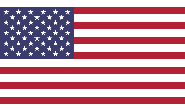Features

CRU: Canacero urges Mexico-US partnership to fend off Asian steel imports
Written by CRU
March 28, 2025
Victor Cairo, head of Mexico’s steel sector body Canacero and CEO of ArcelorMittal Mexico, says he is confident negotiations between the Mexican and US governments planned for April 2 will lead to the creation of a regional block to substitute imports, especially from Asia.
“It is time to join efforts to eliminate the unfair practices that affect our nations and our industries. We want to work together, with a regional block to make a North America, to strengthen national and regional content,” he was quoted as saying in local media.
Companies are willing to absorb the 25% tariff the US administration has imposed on steel imports in exchange for preventing the entry of Asian steel.
“If we analyze US and Mexican imports from Asia, we see an opportunity for both to substitute these imports. The United States imports 4.3 million metric tons and Mexico imports 5.4 million metric tons, totaling 9.7 million metric tons from China and South East Asia. This import substitution could become a strong and solid step to promote national and regional content,” he said.
A 1 billion-mtpy producer, China exports more than 110 million mt, which is three times greater than Mexico’s total consumption of around 30 million mtpy, he noted, adding: “China and its satellite countries export steel to the entire world at subsidized prices with which it is impossible to compete.”
Speaking at Canacero’s annual meeting, Cairo told his audience that the bilateral steel trade between Mexico and the US is worth $10 billion, with the US importing 4.4 million mt into Mexico and 3.2 million mt going from Mexico to the US. “This represents a trade surplus of 1.2 million metric tons for the United States. So a tariff war makes no sense. We must seek solutions that allow us to align trade policies and procedures to maintain the continuous flow of steel between both countries.”
He urged the Mexican government to defend the domestic market, such as by imposing tariffs, eliminating triangulation, guaranteeing customs transparency and issuing certificates of origin. Cairo also argued it was necessary to re-evaluate the country’s trading relationship with Southeast Asia and possibly leave the Trans-Pacific Partnership, a trading arrangement primarily covering countries in the Pacific Rim.
Meanwhile, Brazil will appeal to the World Trade Organization (WTO) against the tariffs the US is imposing on Brazilian products, says President Luiz Inacio Lula da Silva.
“We have two decisions to make: one is to appeal to the World Trade Organization, which we will do. And the other is for us to surcharge the American products we import. It’s putting the law of reciprocity into practice,” he was quoted as saying by local media. “We can’t sit back and think that only they are right and that only they can tax other products.”
This article was first published by CRU. To learn about CRU’s global commodities research and analysis services, visit www.crugroup.com.

Latest in Features

Holiday Notice: Fourth of July
SMU will be closed on Friday, July 4, with no Sunday newsletter on Sunday, July 6.

Final Thoughts
I’m not sure how many different ways I can write that it’s been a quiet market ahead of Independence Day. There are variations on that theme. I’ve heard everything from the ominous “eerily quiet” to "getting better" and even the occasional “blissfully unaware” (because I’m enjoying my vacation).

SMU’s Week in Review: June 30-July 3
It will be a shorter week as the United States celebrates Independence Day on Friday. But we won’t leave you high and dry.

Steel groups welcome passage of budget bill
Steel trade groups praised the passage of the Big Beautiful Bill (BBB) in Congress on Thursday.

Drilling activity down further in US, climbs in Canada
The rig count declined for the 10th consecutive week in the US, while Canadian count rose for the fifth straight week, according to Baker Hughes.
